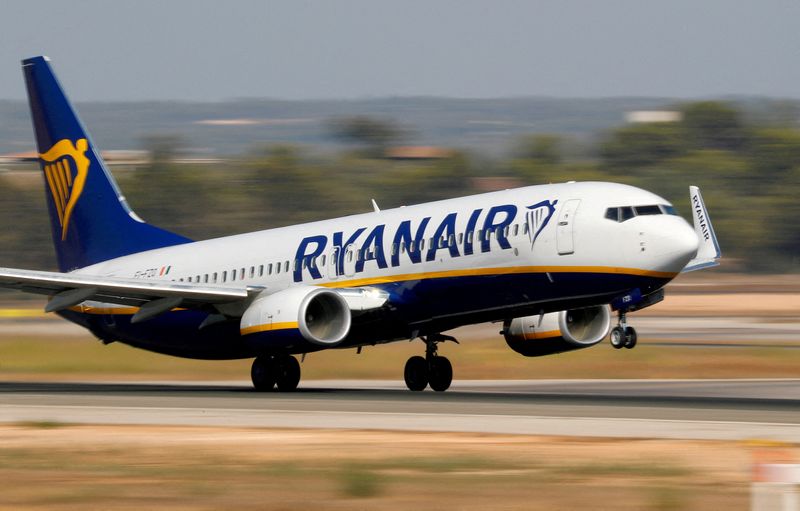By Padraic Halpin
DUBLIN (Reuters) - Ryanair hiked its forecast for after-tax profit by up to 325 million euros on Wednesday, citing recent pent-up travel demand while warning that COVID-19 and the war in Ukraine could still affect the outcome.
Europe's largest airline by passenger numbers saw profit for the year to end-March at between 1.325 billion euros and 1.425 billion euros, up from a previous range of 1 billion to 1.2 billion due to stronger than expected holiday traffic and fares.
The forecasts mean Ryanair is set to easily pass the 1 billion euro annual profit it made before two years of COVID-19 losses and come close to the record 1.45 billion euros reached in the year to March 31, 2018.
The low cost carrier said it expects to report a stronger than expected after-tax profit of close to 200 million euros in the three months to Dec. 31 after strong pent-up travel demand over the Christmas and New Year holidays.
That would represent a record quarterly profit for that period for the airline, almost double the 106 million euros generated in the three months to the end of December 2017.
It said it still expects the period from January to March to be loss making due to Easter holidays falling in April and a recent softening in traffic and pricing for flights out of the United Kingdom and between Irish and provincial UK airports.
The Irish airline maintained its forecast that it expects to fly 168 million passengers in its financial year to the end of March, far ahead of its previous record of 149 million.
The revised overall guidance remains heavily dependent upon avoiding adverse events in the next three months such as impacts from COVID-19 or the war in Ukraine, it added.

Ryanair said earlier on Wednesday that it flew 11.5 million passengers in December, up 3% on its previous pre-COVID high and the ninth month in a row that it has carried more passengers than the corresponding pre-pandemic period.
CEO Michael O'Leary said at the start of December that average Christmas air fares were up by a low double-digit percentage year-on-year as passengers travelled without restrictions for the first time in three years.